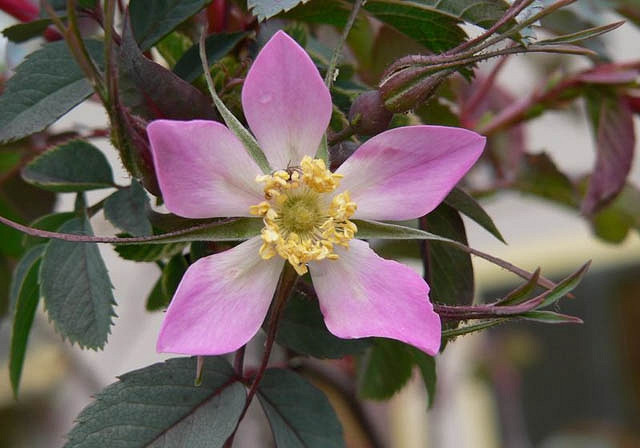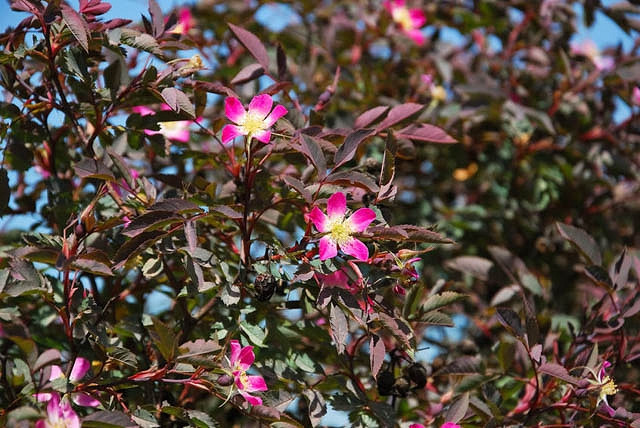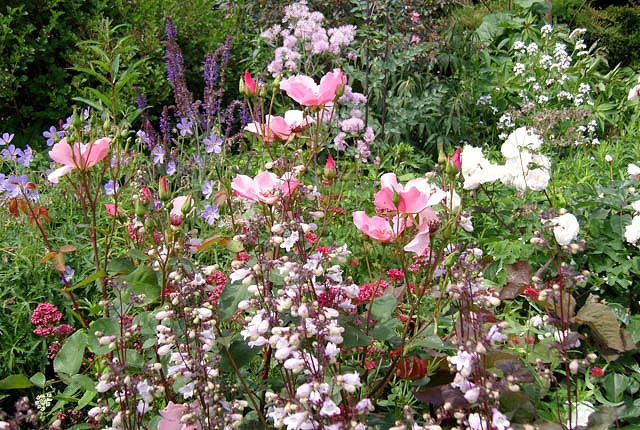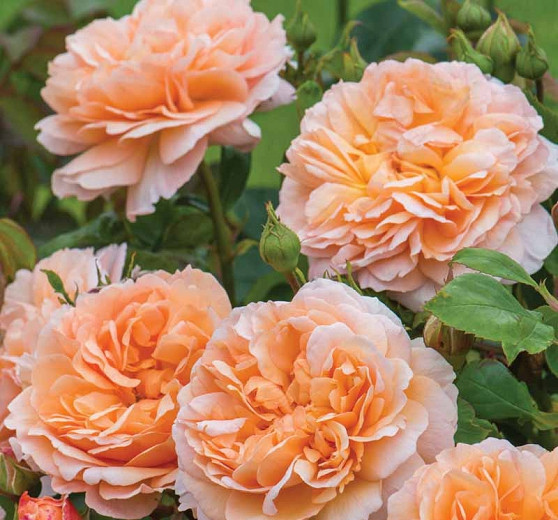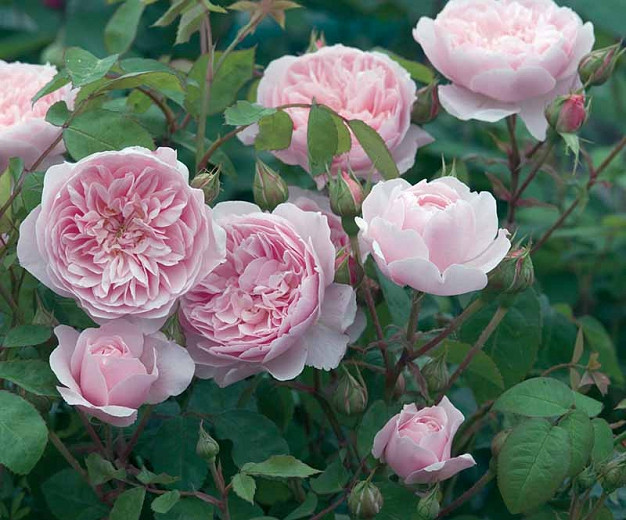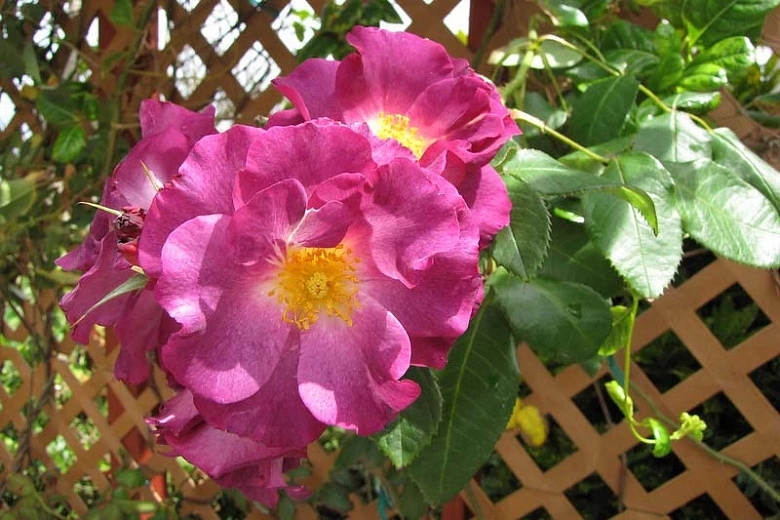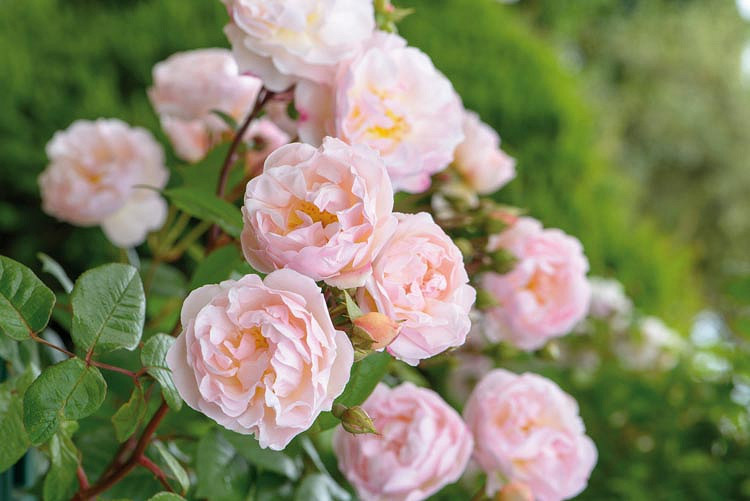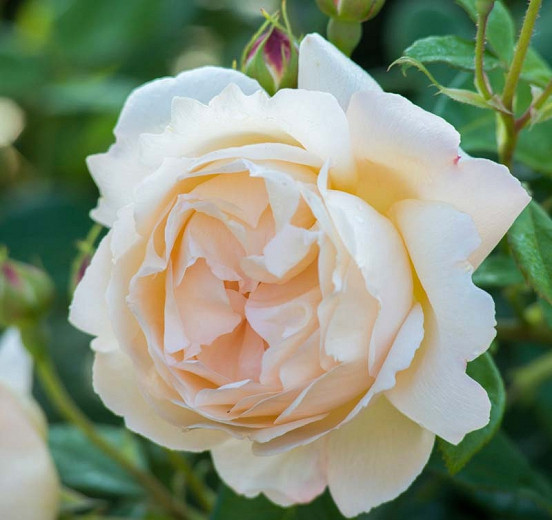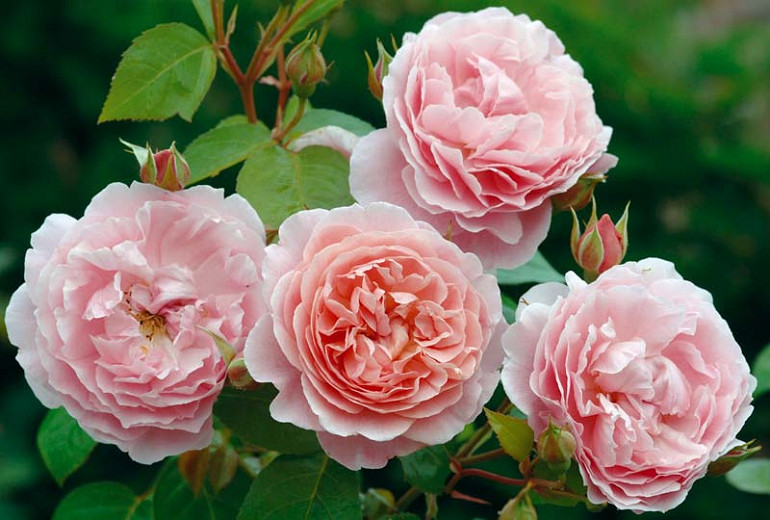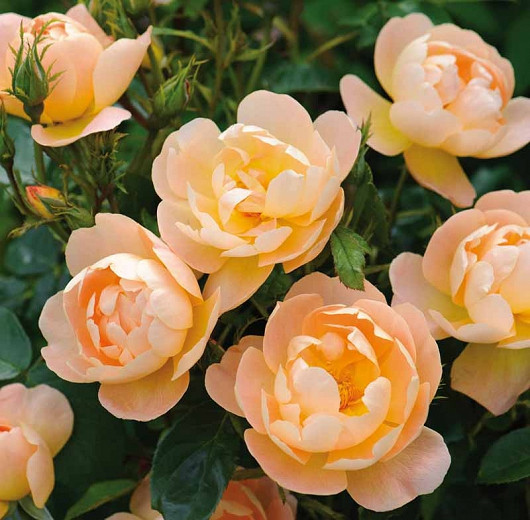Rosa glauca (Redleaf Rose)
One of the most cold hardy roses, Rosa glauca is a fabulous medium-sized shrub rose that can be relied on to provide interest and color. The foliage of this shrub rose is quite exceptional, a mix of blue gray shades with delicate overtones of burgundy and purple when in full sun, turning to silvery gray-green in part shade. The upright and gracefully arching reddish stems, almost thornless, are another ornamental feature of this vigorous and healthy rose shrub. In late spring to early summer, slightly fragrant, single, pale-centered, deep rose-pink blossoms, 1.5 in. wide (4 cm), with prominent yellow stamens, are held in small flat clusters along the plant's arching frame. As an extra bonus, they are followed in late summer by crops of orange-red hips that persist well into winter, adding interest and color to the winter garden. R. glauca was introduced prior to the 1830s.
- Featuring a bushy, vase-shaped habit, this ravishing shrub is a superb addition to shrub borders, at the back of perennial borders, and creates a lovely fragrant informal hedge. Its lovely foliage color is easy to work with and helps create outstanding color combinations.
- Grows up to 6-8 ft. tall (180-240 cm) with a spread of 5-7 ft. (150-210 cm).
- Recipient of the prestigious Award of Garden Merit of the Royal Horticultural Society, winner of the GreatPlants award, which is a joint effort between the Nebraska Nursery, Landscape Association and the Nebraska Statewide Arboretum.
- Best grown in full sun, in fertile, humus-rich, moist, well-drained soils. Light shade is tolerated, and is even better for the foliage color but flowering and disease resistance may be affected. Provide good air circulation and avoid overhead watering. For best flowering, apply a balanced fertilizer and mulch in late winter or early spring. Tolerant of poor soils.
- Good disease resistance.
- Attractive to pollinating insects, butterflies and birds which feast on the large and colorful rose hips during the winter months.
- Requires little maintenance. Do not remove spent flowers if you want to enjoy a beautiful crop of orange-red hips in fall and winter. Pruning should be carried out once flowering is complete. Obviously, if pruning is carried out after flowering no hips will follow.
- Native to Central and Southern Europe.
Requirements
| Hardiness | 2 – 8 |
|---|---|
| Heat Zones | 1 – 8 |
| Plant Type | Roses, Shrubs |
| Plant Family | Rosa – Shrub Roses, Rosa – Roses |
| Exposure | Full Sun, Partial Sun |
| Season of Interest | Spring (Late)Summer (Early,Late)FallWinter |
| Height | 6' – 8' (180cm – 240cm) |
| Spread | 5' – 7' (150cm – 210cm) |
| Spacing | 60″ – 84″ (150cm – 210cm) |
| Water Needs | Average |
| Maintenance | Average |
| Soil Type | Chalk, Clay, Loam, Sand |
| Soil pH | Acid, Alkaline, Neutral |
| Soil Drainage | Moist but Well-Drained, Well-Drained |
| Characteristics | Fragrant, Plant of Merit, Showy, Fruit & Berries |
| Attracts | Birds, Butterflies |
| Garden Uses | Beds and Borders, Hedges and Screens |
| Garden Styles | City and Courtyard, Informal and Cottage, Traditional Garden |
